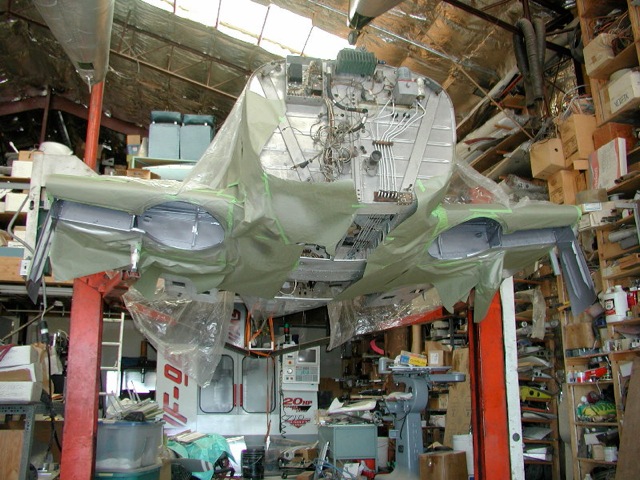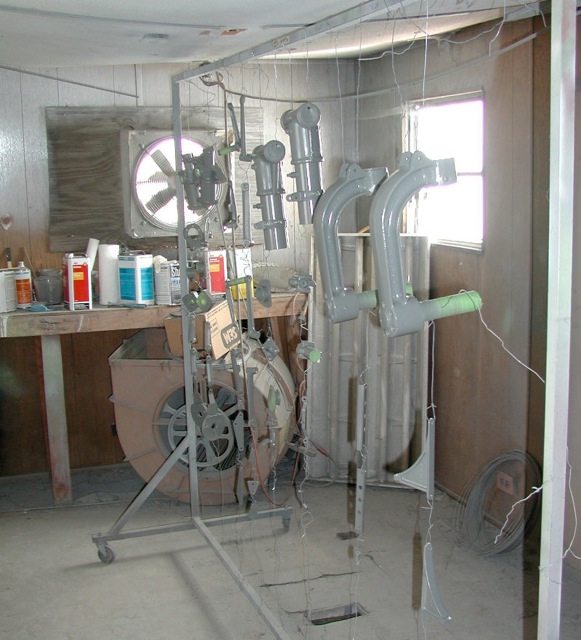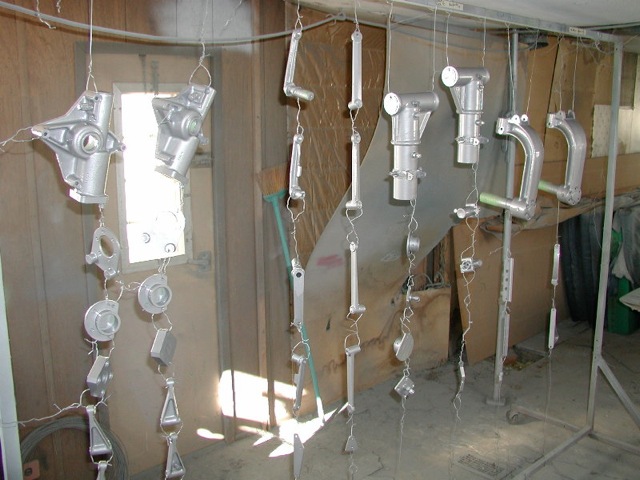navigation
The story of N3351K and Hurricane Earl
It is sad to see a Swift damaged for those of us who are caretakers or involved in the Swift world, but it is particularly painful when its your Swift...
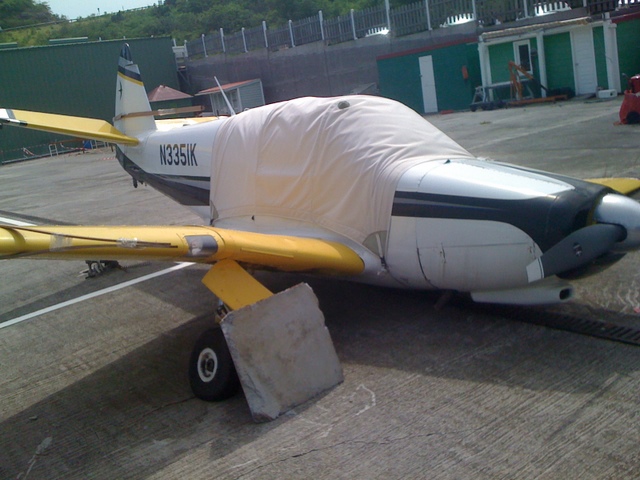
Last Summer, my Swift, N3351K was severely damaged in Hurricane Earl. Normally, my bird would not have been in St Barths, where I live during the winter months, during hurricane season. However, I still have some work in the islands over the summer months, and I generally commute from Nantucket to St Barth's in 51K. Why not! Weather prohibited my flight back unfortunately, and then life and work got unexpectedly busy back in Nantucket, and I had to delay returning to fly the plane back to ACK. When Earl developed in the eastern Atlantic, I watched it attentively, and then cancelled everything on my schedule and headed back to SBH when it looked like the storm might approach St. Barths. At the time, the probability was very low that the storm would develop or approach dangerously close to the island. However, as a career sailor, I never trust a hurricane. Back in SBH, I still had my boat, the boat that I captain, a Cherokee 6 I am a partner in and my Swift.
The classic that I captain, Piera, had to take precedence in order of storm preparation just in case. The plan was to haul out Piera, fly 51K to Guadeloupe and put her in a hanger, then return, secure the 6 or help my partner get her ready to ferry off, and then sail my boat, Corban, south as fast as I could. She too was not meant to be in SBH over the summer, but that is another story. The short version is that there were some delays in the hauling process, and I did not have an opportunity to fly 51K to Guadeloupe and get back to secure the boat and sail Corban to safe harbor. Lots of hard decisions had to be made. The storm was still meant to be a non-issue for St. Barths. The track was forecast to be well north of the island and no intensification was expected. So there was some optimism.
I made the decision to secure the Cherokee and the Swift as best possible, and then Sail Corban to a safe harbor until the storm was safely to the west.
This is what I did.
However, as these things too often turn out, the storm intensified to a category 4 hurricane and the track shifted in the direction of St. Barths. This all happened only 12 hours before the storm was predicted to be at our longitude. I was already out to sea comfortably sailing towards Guadeloupe, singlehanded. About midnight when the winds were consistently over 80kts and gusting much higher, I began to wonder about how my little airplane was doing... I knew what the conditions were at my position, and I can say that they were less than pleasant...
I rode the storm out at sea, never making it to Guadeloupe. The storm had intensified so fast and to the south, the conditions were impossible to continue sailing south, and I had to run out to sea. I wound up about 60nm or so out in the atlantic east of Antigua before I could turn the boat around and start heading back in the direction of St. Barths. Corban, a stalwart Swan 42, suffered minor damage considering the conditions we had just sailed through, but I was not so optimistic for my Swift... However, I had left her in a as good a spot as possible with the wings sandbagged, and tied down as securely as possible.
When I made it back to St. Barths, to skip forward, I had called ahead and discovered that my plane was "on the ground". I didn't ask for any details. As it turned out, during the storm, the winds were similar to what I had experienced on Corban, and the tail wheel has completely departed the aircraft, or rather, the aircraft had departed the tailwheel. The tailwheel was still securely tied down... At this point, things really went pear-shaped. The plane was secured at the jackpoints, at the prop, at the gear and at the tailwheel. When the tailwheel separated from the plane, she jeered and jerked and tried turning and twisting with ever big gust. Finally one starboard gear collapsed, and things really went south.
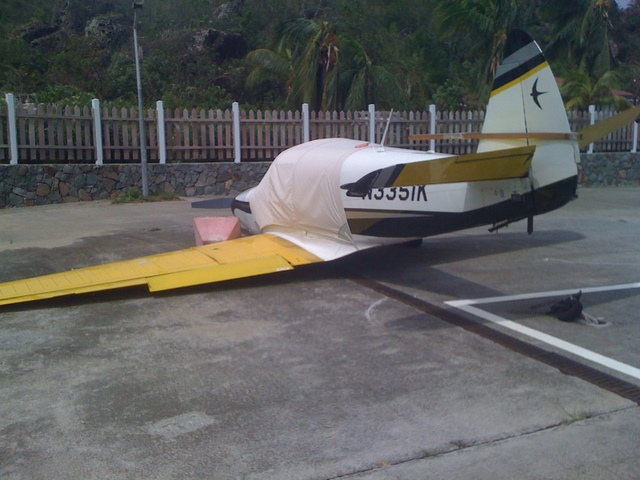
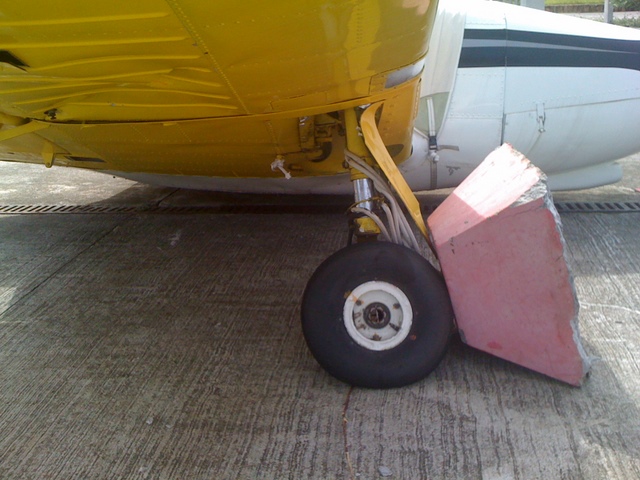
The end result was that the plane sustained a bent main spar, and LOTS of minor damage to the wings, fairings and some of the control surfaces. The fact that a the fuselage and tail section came through in good shape is a testament to the strength of these amazing airplanes. However, the damage was too extensive to contemplate a 'repair'. I settled with the insurance company who had totaled the plane and I bought her back to rebuild.
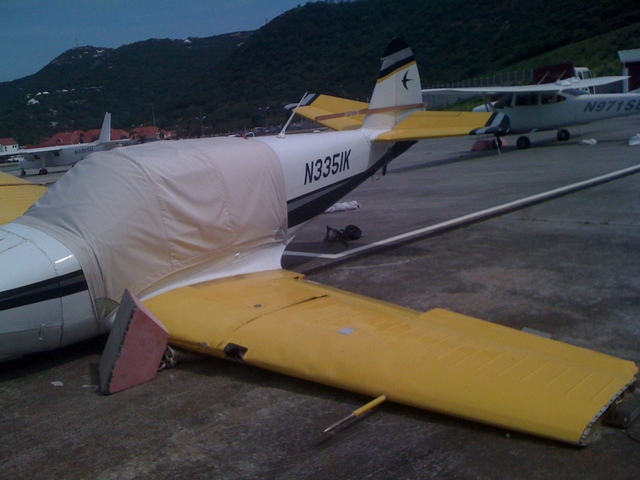
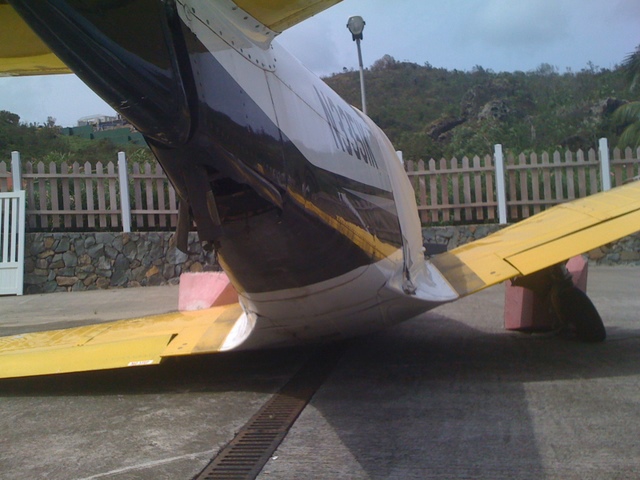
The main point of the story is to share the images of getting her from the airport to the commercial dock and into a container. She is headed back to the states to Don Bartholomew's shop to be completely rebuilt. Its going to take a lot of work and resources, but Don is the man for the job and 51K will be back in the air better than ever, with a new canopy from the Aeroplane Factory.
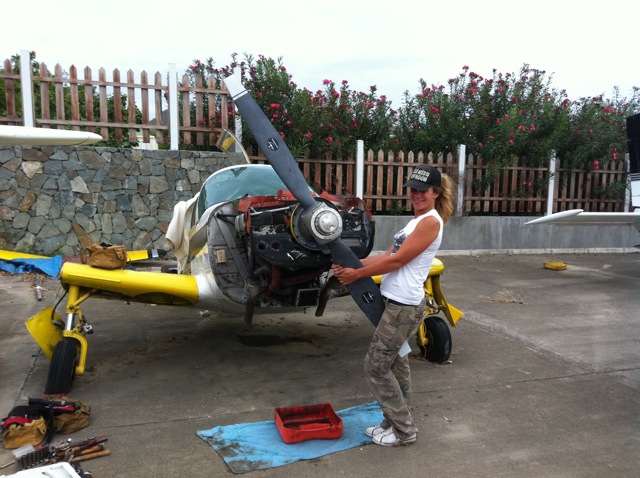
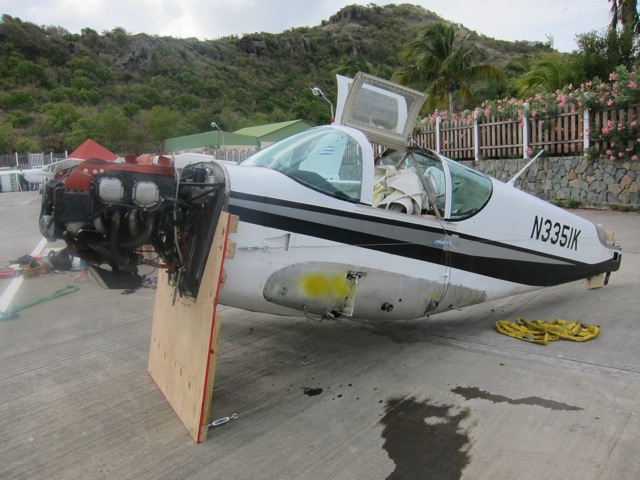
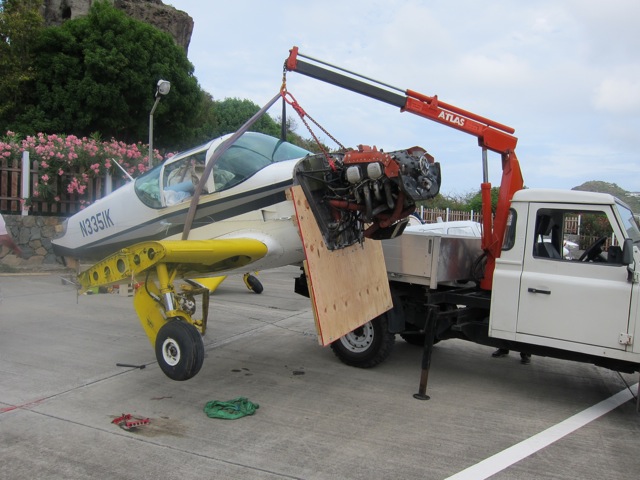
Enjoy the images. As Swifts have been shipped all over the country and world, and have a unique transportation issue of being too wide for conventional trailering, we have all seen some pretty imaginative transport solutions. As the main spar was bent, Don recommended cutting one of the inner wing panels off at the spar to make crating and transporting easier. In the end, this turned out to be the best course of action.
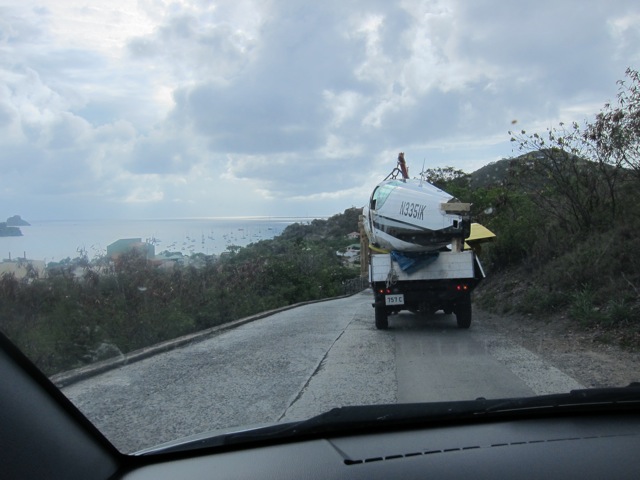
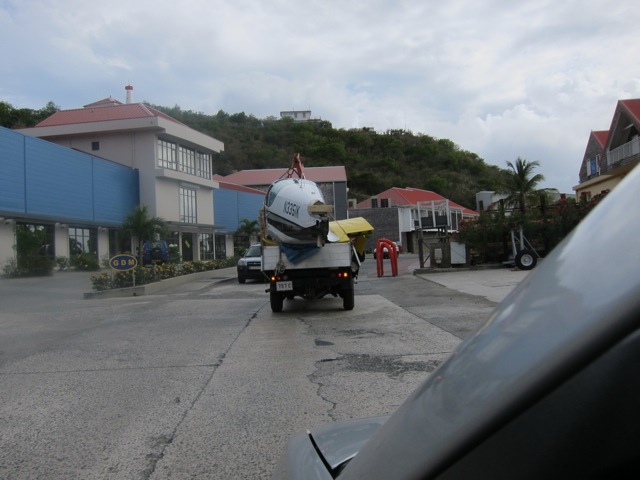
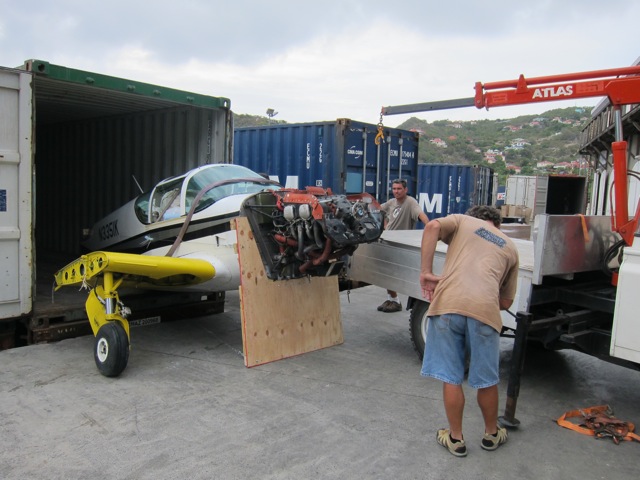
I built a frame to support the plane without one of the gear, and with the help of a good friend who has a Land Rover with a hydraulic crane, we picked her up, got her on the bed, and tucked into the container. Without one wing-panel or the empennage, a Swift fits very nicely in a 20' container!
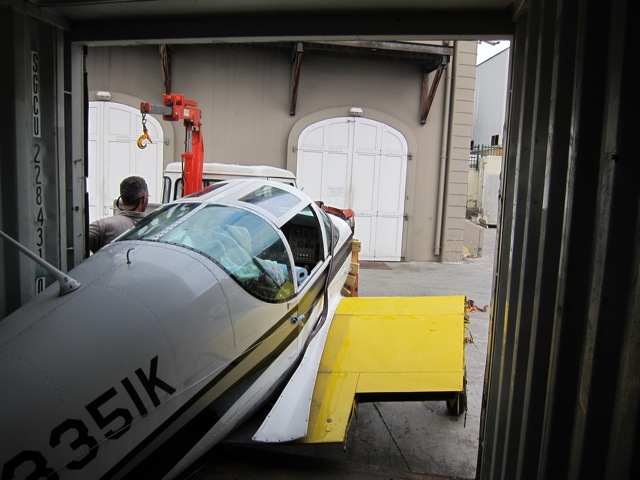
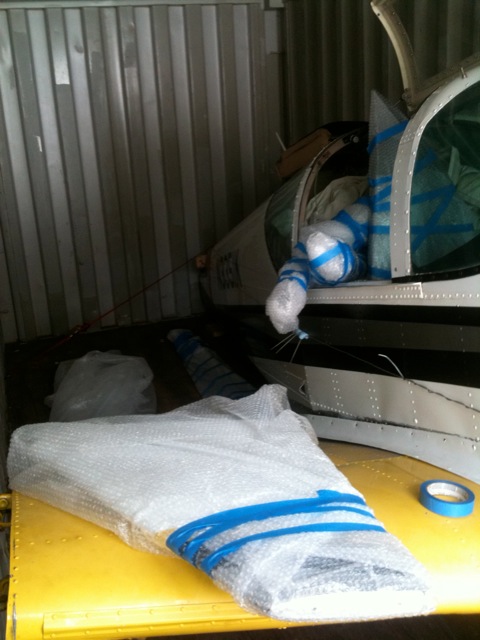
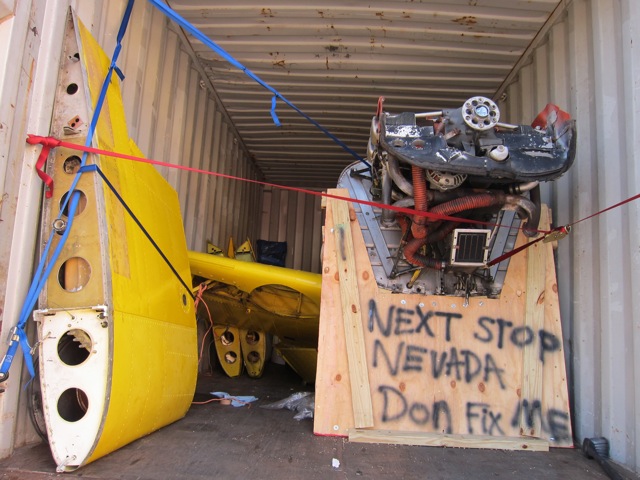
Bon voyage little Swift. See you in Nevada! Dan
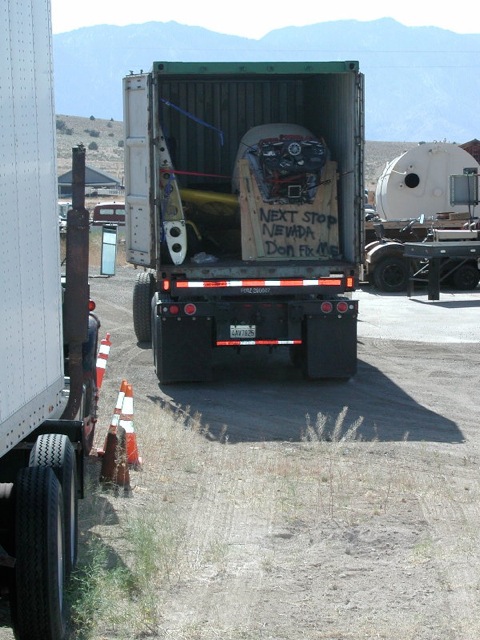
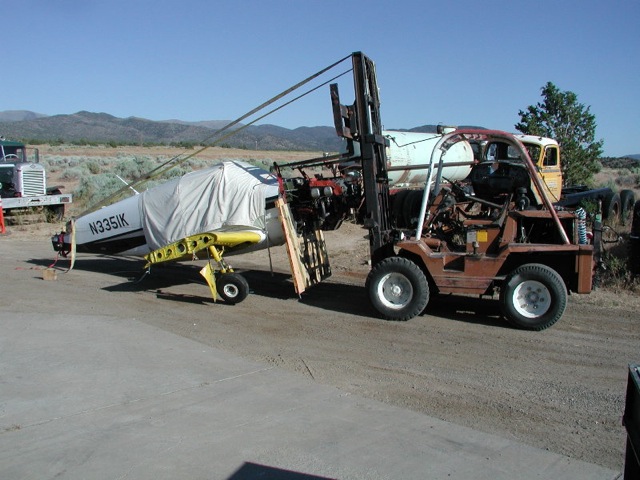
As a postcript to this story, Don Bartholomew (and his faithful companion Astro) report that significant progress has been made on the restoration of 3351K.
" It was found that the fuselage only needed relatively minor (by my standards) repairs, so it was stripped and repairs were made. The centersection was trashed so we installed a used, serviceable one I had here in Nevada. The horizontal was bent, so we rebuilt it. The vertical stab was corroded, so we built a new one. The wheelwells were stripped and painted. The gear and actuators were disassembled, cleaned, and painted and are currently going back together."
